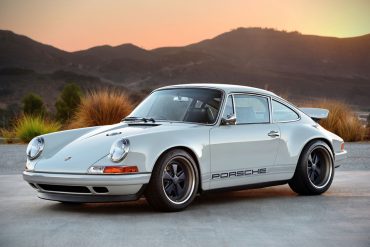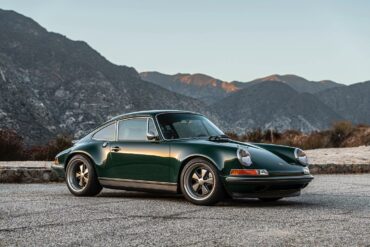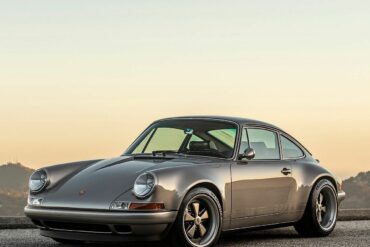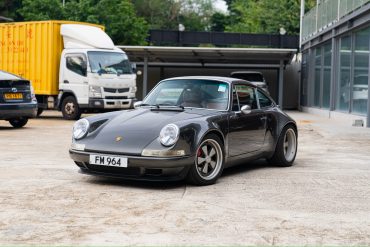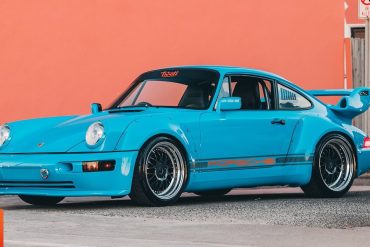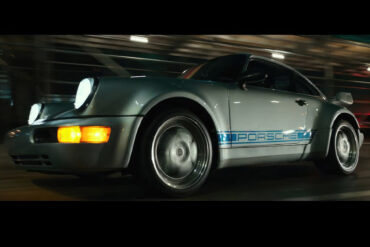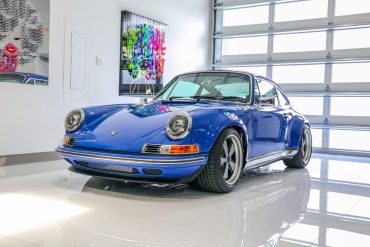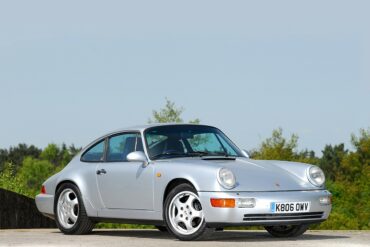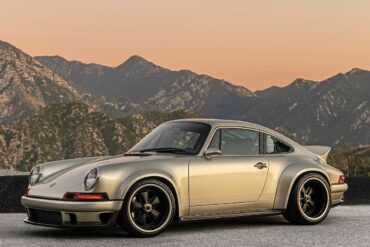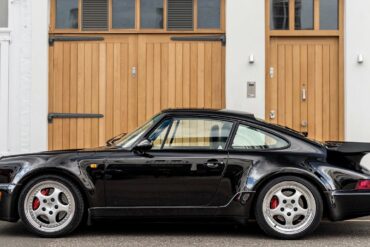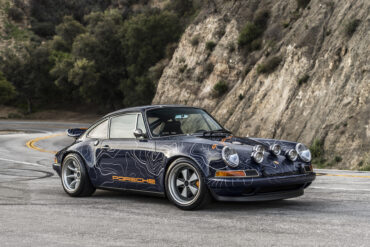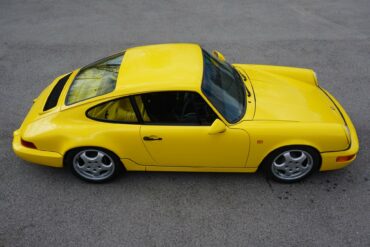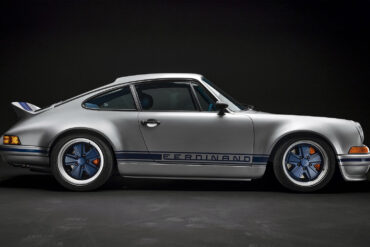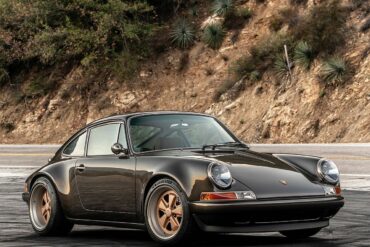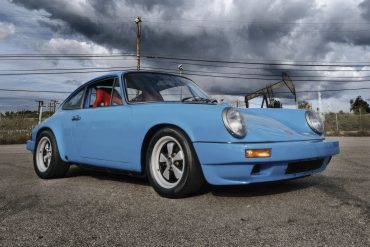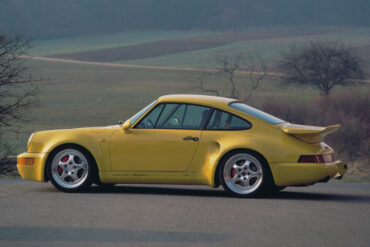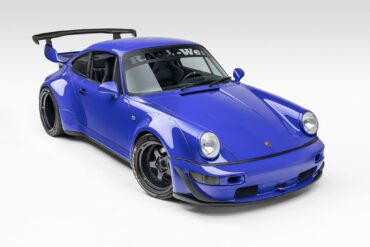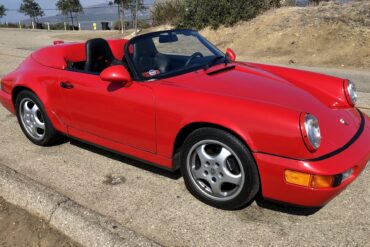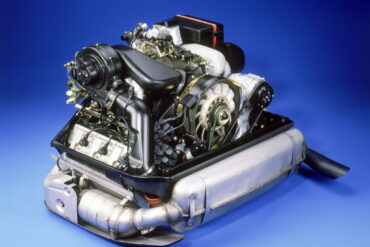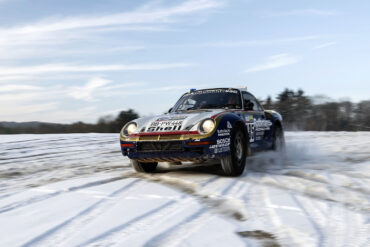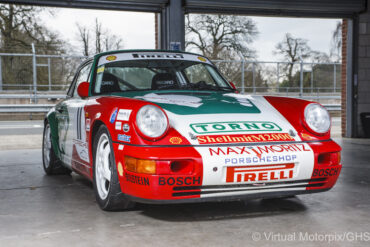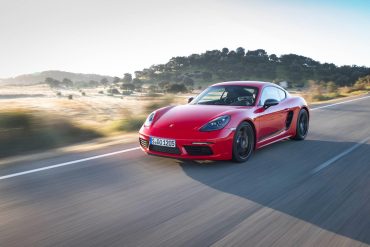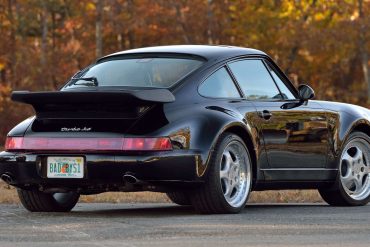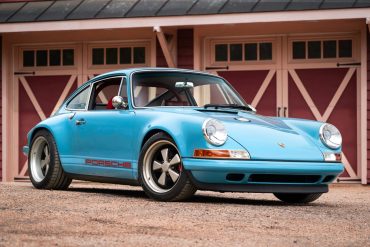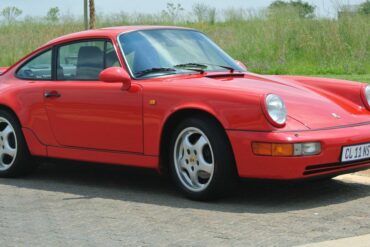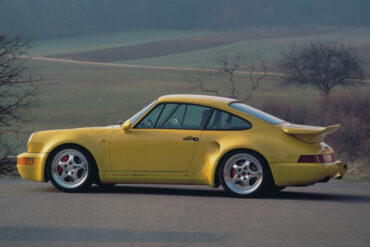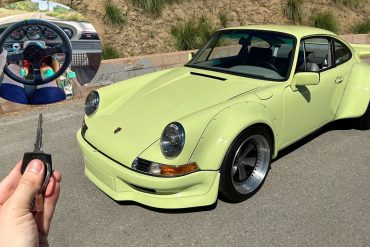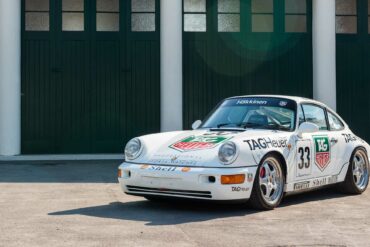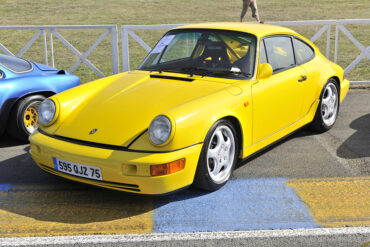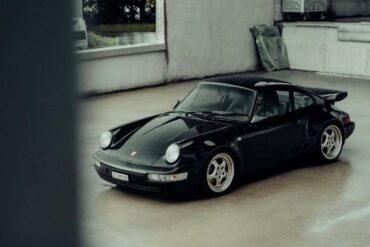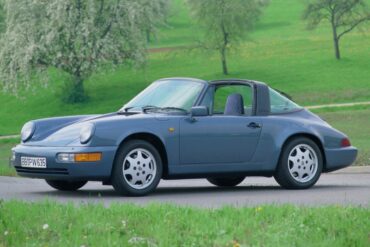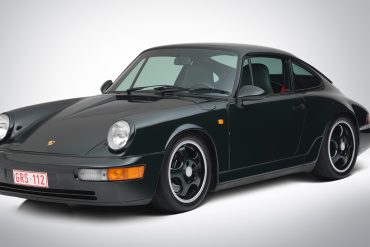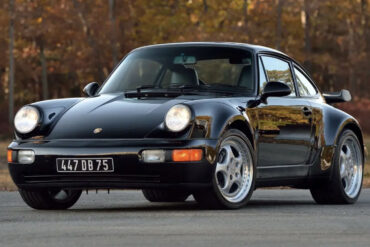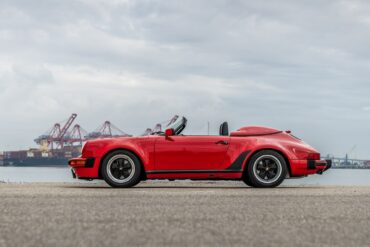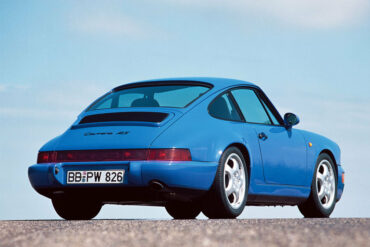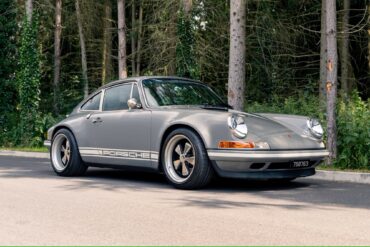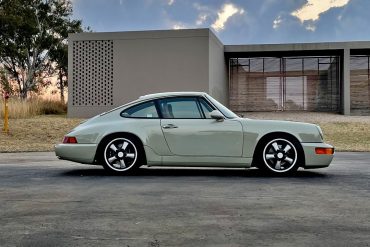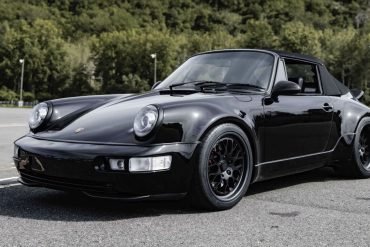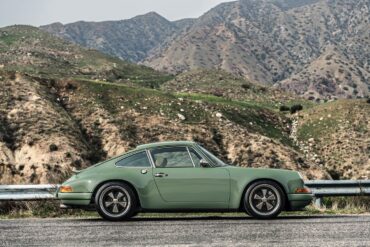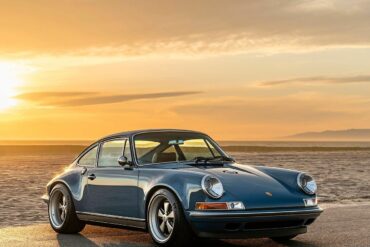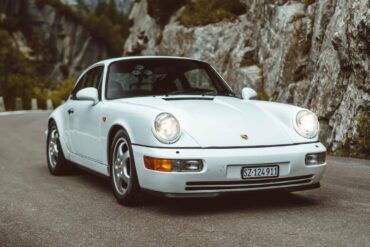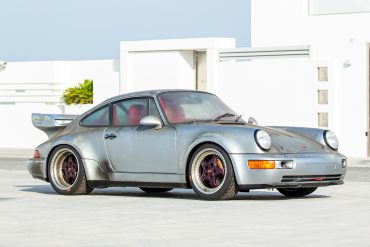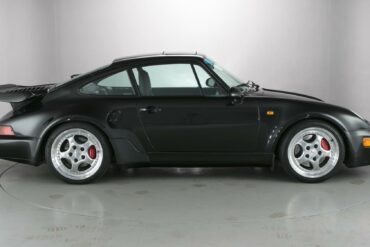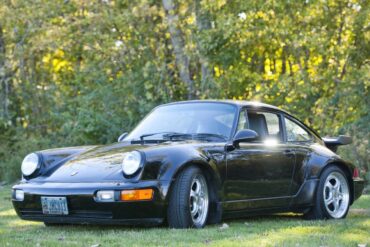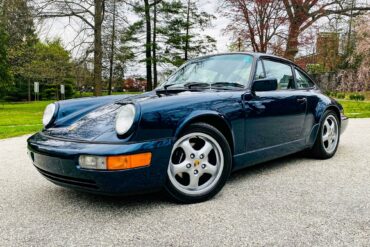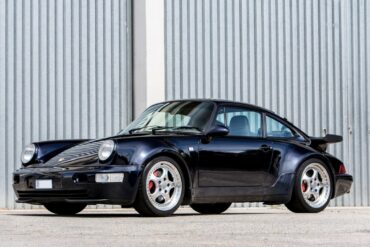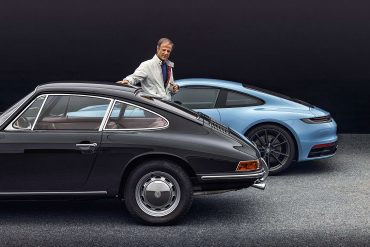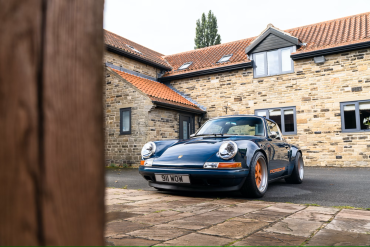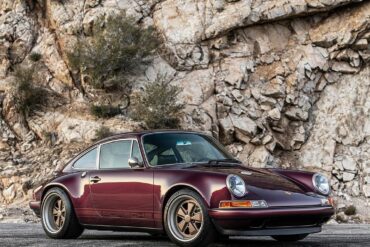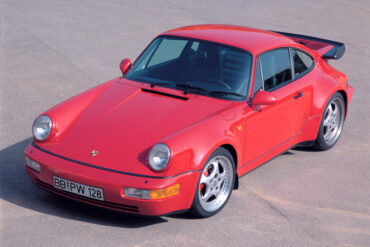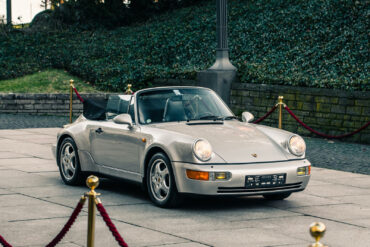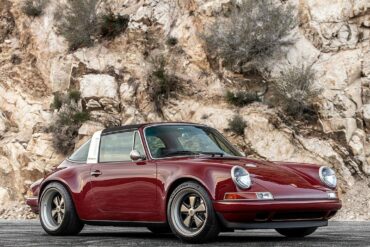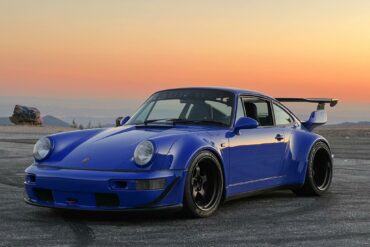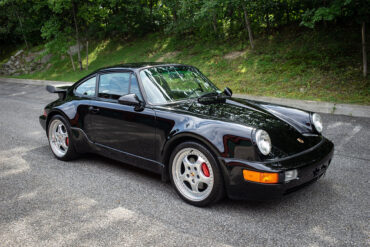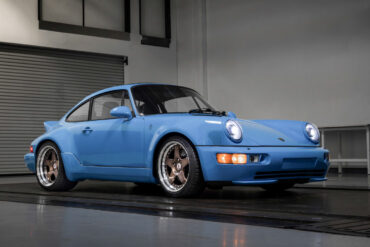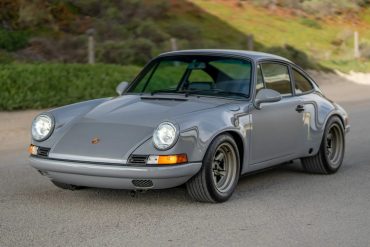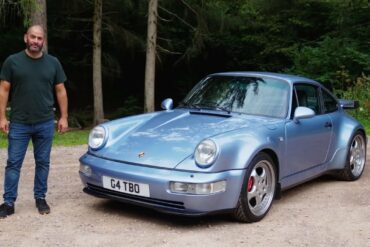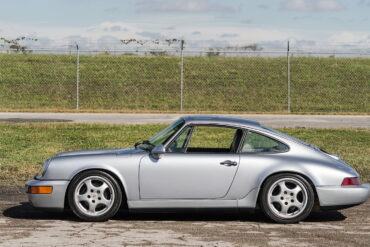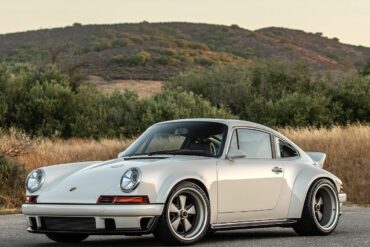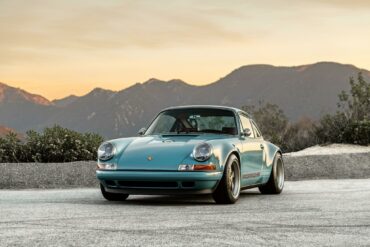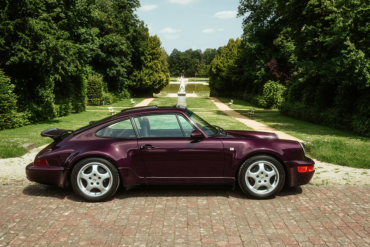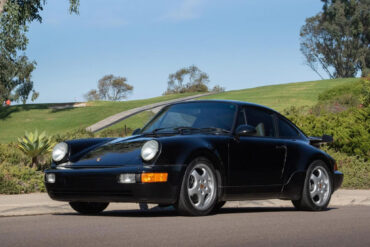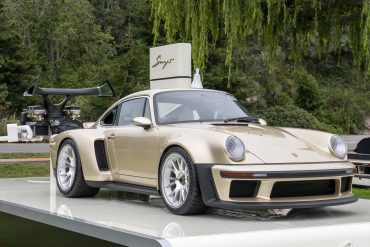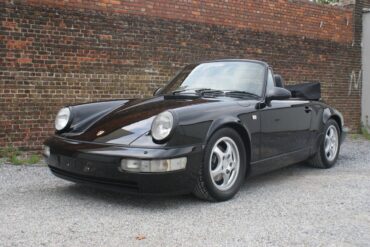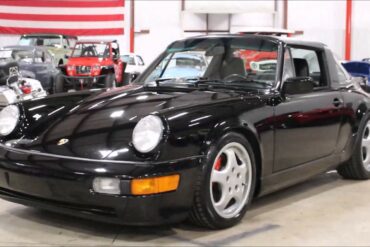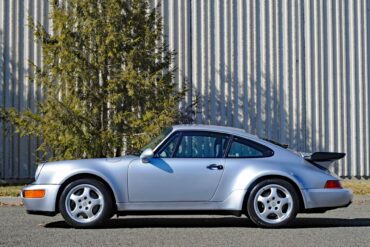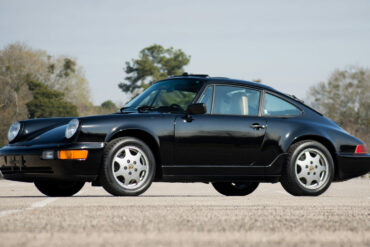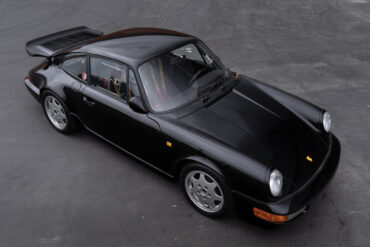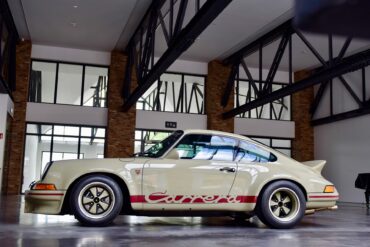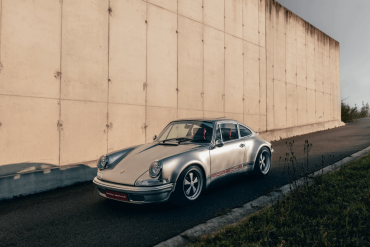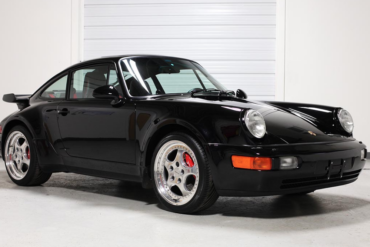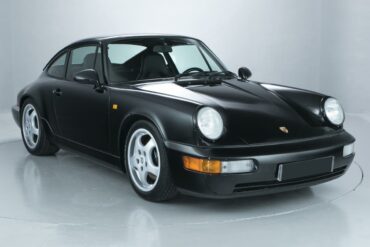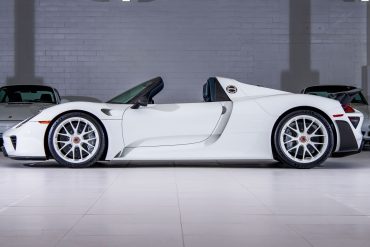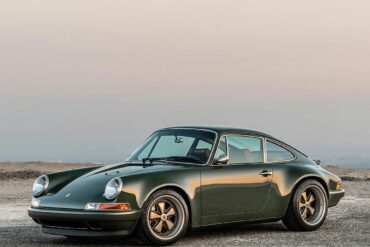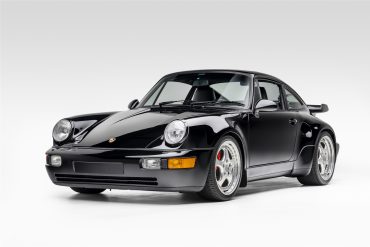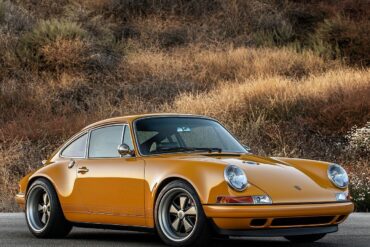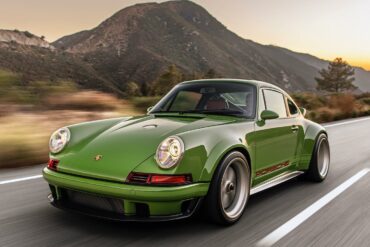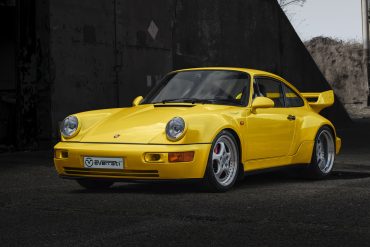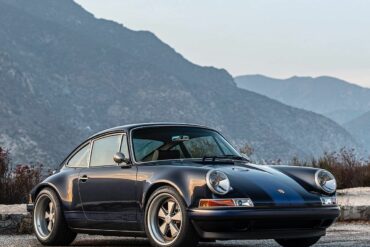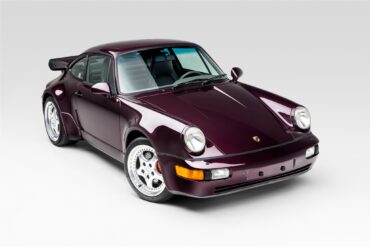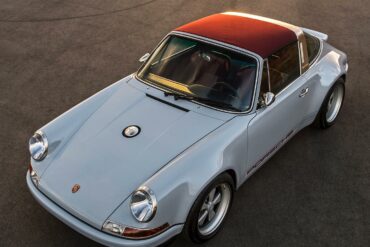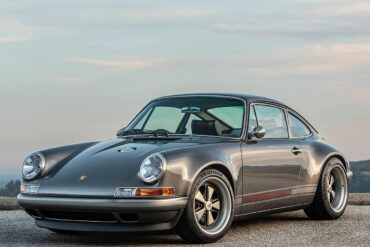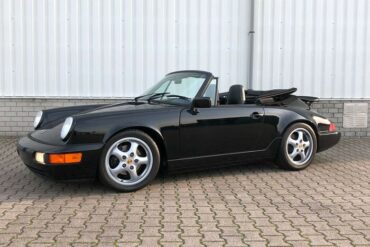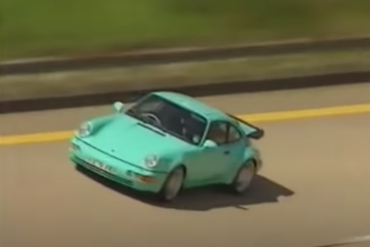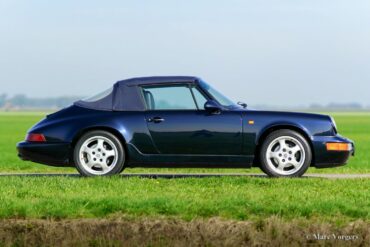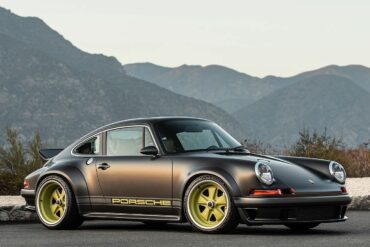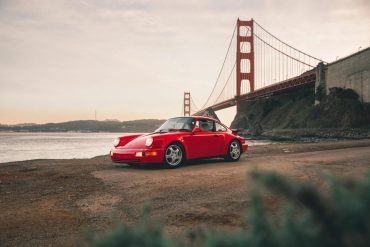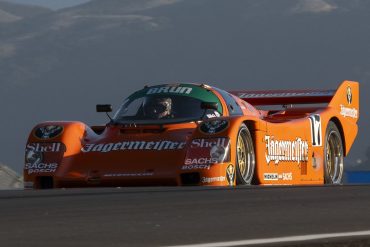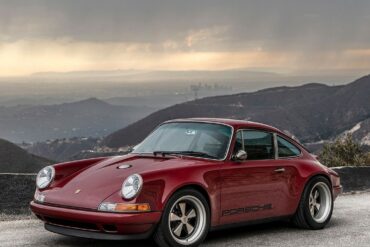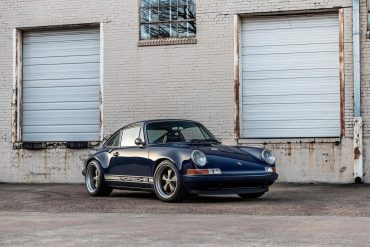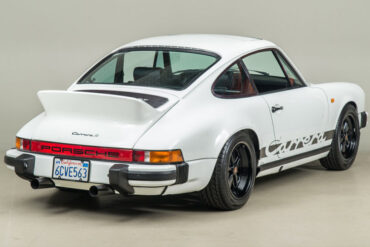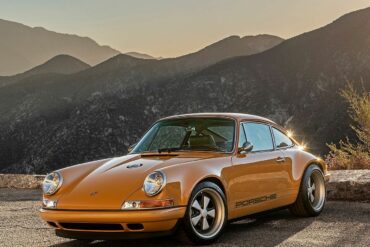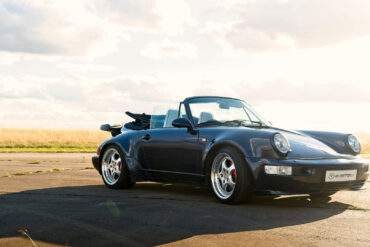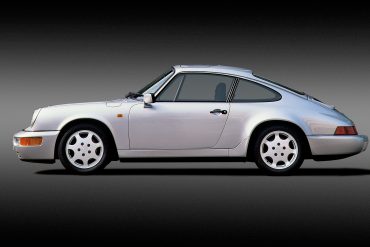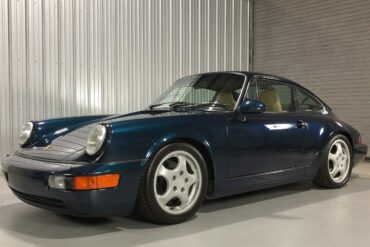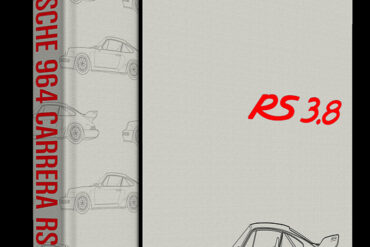Singer Vehicle Design has entered into a historic agreement with Porsche Motorsport North America. It is a partnership that will...
Porsche 911 (964)
In 1989 Porsche came out with the 911 Carrera 4 (964). The new 911 was a contemporary take on the classic two-door sports car and came at a time when many were predicting the end of the 911 (the company was producing the 944 and working on the upcoming 968). The long run of the previous 911 meant the 964 needed a major update and Porsche delivered on that promise with 85% new components and virtually none of the predecessor’s architecture used. Save for the introduction of aerodynamic polyurethane bumpers and an automatically-extending rear spoiler which replaced the “whale tail” found on the 911 throughout the 1980’s, externally, the 964 kept the same style as the classic 911. The 964 rode on a completely redesigned chassis with rear suspension switching from torsion bar to trailing arms with Porsche’s “Weissach” rear axle, which added self-steering elements to reduce the chance of oversteer. It featured a naturally aspirated 3.6 liter boxer engine that produced an impressive 250 horsepower. See all of our Porsche 964 Research.
Singer Vehicle Design – Lauf Commission Today, we take a closer look at the Singer Vehicle Designs Lauf Commission. The...
Singer Vehicle Design – Canyon Drive Commission Today, we take a closer look at the Singer Vehicle Designs Canyon Drive...
Theon Design is swiftly establishing itself as one of the prominent names in the realm of 911 restomods, specializing in...
We stumbled on this pretty cool video of a Porsche 964 transformation and loved it. It is a sped up...
Transformers: Rise of the Beasts to feature rare Porsche 964 The Porsche 911 Carrera RS 3.8 is an iconic sports...
Starting with a European-market 964 Carrera 4 that retains its original numbers, this 1991 model underwent an extensive custom nut-and-bolt...
1993 Porsche 911 Carrera 4 Coupe (964) Technical Specifications Engine Type Flat 6 Induction Normally-aspirated Cooling Air/oil-cooled Valvetrain Single overhead...
Singer Vehicle Design – Caroline Commission Today, we take a closer look at the Singer Vehicle Designs Caroline Commission. First...
How to Identify Your Porsche 911 (964) Turbo 3.6 In addition to the Slantnose cars there was a 964 Turbo...
Singer Vehicle Design – Mulholland Commission Today, we take a closer look at the Singer Vehicle Designs Mulholland Commission. It...
1991 Porsche 911 Carrera 4 Lightweight (964) Technical Specifications Engine Type Flat 6 (M64/03 Flat-6) Induction Naturally Aspirated Cooling Air/oil-cooled...
Air-Cooled 911 “Brawler” Of all the cars on the market, the Porsche 911 is arguably the one that’s seen the...
The “Indy Commission” by Singer Vehicle Design was built for IndyCar legend Dario Franchitti. Powering the Indy commission is a...
While originating from the East Coast, 5001 Workshop founder Marlon Goldberg gravitates towards building Porsches for their experience, not their...
1992-1993 Porsche 911 Turbo S 3.3 ‘Leichtbau’ (964) Technical Specifications Engine Type Flat 6 Induction Turbocharged Cooling Air/oil-cooled Valvetrain Single...
Ultra Rare, Ultra Cool Have you ever seen a 911 Flatnose before? Neither had we. Here’s the story of one...
In January 2022, the current owner of this 1993 Porsche 964 Carrera 2 Coupe, originally delivered new in Japan, sent...
Note: Some images from this article provided by Roger Katz. The Type 964 Porsche 911 was a revolutionary car when...
Porsche 911 (964) Engine Codes The engine number is located on the engine block, on the right side of the...
Factory recommissions the famous Porsche 959 Paris-Dakar The recommissioning has been carried out over the past few months by the...
Introduced in 1989 (the year of the 911’s 25th anniversary), the 964 Carrera 4 was a significant new model for the company, but the 4-wheel drive system was deemed unsuitable for the company’s racing series. Manufactured alongside the Carrera 4 at the same time was the more traditional rear-wheel drive Carrera 2, but this model’s launch was only planned for a year later, in the hope that it would not detract from potential sales of the Carrera 4. The 1990 season was the first season that saw the 911-based model become the pillar on which the Porsche Carrera Cup series has been established.
On a different budget? Check out our other Buyer’s Guides: Budget Based Porsche Buyer’s Guide: Up to $25,000 Budget Based...
Singer Vehicle Design – Westlake Commission Today, we take a closer look at the Singer Vehicle Designs Westlake Commission. The...
Porsches are, by nature, expensive cars. Still, it’s hard not to notice when one sells for over a million dollars,...
Rob Dickinson, founder of Singer Vehicle Design, has transformed his childhood obsession with Porsche 911s into a company crafting automotive...
1990 Porsche 911 Carrera 2 Coupe (964) Technical Specifications Engine Type Flat 6 Induction Normally-aspirated Cooling Air/oil-cooled Valvetrain Single overhead...
Porsche made a lightweight version of the Turbo simply known as the Tuubo S. This used the spartan appointments of the Carrera RS with an upgraded version of the Turbo engine. Some cars received graphics on the side celebrating IMSA Supercar Championship. Similar to the Carrera RS, the Turbo S had no power steering, air conditioning, airbags, central locking, alarm system, rear window wiper, smaller window washer reservoir, smaller horn, and had thin-gauge glass. The engine used a second oil cooler and slightly higher boost to improve overall performance.
Parker Nirenstein of the YouTube channel Vehicle Virgins gives us a first-person perspective of what it’s like to drive a...
964 Carrera Cup Champions & Results 964 Carrera Cup Germany 1990 Olaf Manthey Rüdiger Schmitt Wolfgang Land 1991 Roland Asch...
For race teams and track day customers Porsche prepared a small number of the 964 Cup cars according to the FIA NG-T regulations. Officially called the Competition model, these custom-ordered cars were an intermediary step between the Carrera Cup option (M001) and the standard tourer (M002). This M0003 option was available directly from Porsche as a road-going model. These cars had almost all the Carrera Cup modifications including the new suspension. This lowered the car by 40mm in the rear and 50mm in the front. It also included fitting of the larger 930 Turbo disc brakes and adjustable anti-roll bars.
The 1989/90 change of model year saw the launch of the Porsche 911, 964 series onto the market. This 911...
1993 Porsche 911 Carrera 2 Targa (964) Technical Specifications Engine Type Flat 6 Induction Normally-aspirated Cooling Air/oil-cooled Valvetrain Single overhead...
Porsche introduced the 964 Carrera RS for the 1992 model year, specifically targeting the European market as a lightweight, high-performance...
Director sells Turbo for $60K, later auctioned for $1.3M Amazingly, Bad Boys director Michael Bay was involved in a bombshell...
The 1989 model of Porsche’s 911 Speedster model lineup is arguably one of the most recognizable as the 911 Speedster...
1991-1992 Porsche 911 Carrera RS (964) Technical Specifications Engine Type Flat 6 Induction Naturally Aspirated Cooling Air/oil-cooled Valvetrain Single overhead...
The Qatar Commission was specified with a Light Grey paintwork, where the interior panelling matches the body color. The Brown leather...
On-board drive & in-depth review An on-board drive & in-depth review of the specs and build principles applied to our...
While I admit the title is misleading, American company Sacrilege Motors does have the answer to the question; “Both.” That’s...
Singer Vehicle Design – Linden Green Commission Today, we take a closer look at the Singer Vehicle Designs Linden Green. Linden...
Singer Vehicle Design – Wyoming Commission Today, we take a closer look at the Singer Vehicle Designs Wyoming Commission. This...
A great review in the mountains of Switzerland A great review in the mountains of Switzerland ...
Bonhams will auction one of the two existing examples of the Porsche 911 Carrera RSR 3.8-liter “Strassenversion” Coupé on November...
The Porsche factory had 93 Turbo chassis left. These were all transferred to Porsche Exclusiv and hand built as the very special 964 Turbo 3.6 S. They were offered with normal, or ‘Flachbau’ slant nose front ends. While the vast majority of Turbo S’ were fitted with the ‘Flachbau’ nose as a no-cost option, the Turbo S could also be had with the traditional 964 nose as well. In all, 76 Flatnose cars were made while 17 non-Flatnose (known as Package option) cars were made. These cars were also fitted with the X88 option, which increased power to 380 hp. 75 flatnose units were produced.
1992 Porsche 911 Turbo 3.3 Coupe (964) Technical Specifications Engine Type Flat 6 Induction Turbocharged Cooling Air/oil-cooled Valvetrain Single overhead...
1991 Porsche 911 Carrera 2 Coupe (964) Technical Specifications Engine Type Flat 6 Induction Normally-aspirated Cooling Air/oil-cooled Valvetrain Single overhead...
1994 Porsche 911 Turbo 3.6 Coupe (964) Technical Specifications Engine Type Flat 6 Induction Turbocharged Cooling Air/oil-cooled Valvetrain Single overhead...
Evolution, not Revolution Since its debut in 1964, the Porsche 911 has epitomized engineering evolution. Conceived by Ferdinand “Butzi” Porsche,...
This remarkable 911 is a bespoke sports car, crafted by Singer Vehicle Design, and is one of the few Targa...
The Berkshire Commission is a 4.0L, left-hand drive (LHD), rear-wheel-drive beauty presented in Amethyst Metallic with delicate ghosted stripes and...
The 1989/90 change of model year saw the launch of the Porsche 911, 964 series onto the market. This 911 model was initially available as a Coupe, Targa and Convertible. From model year 1991 onwards Porsche also introduced its top-of-the-line model - the Turbo - into this series. In spite of bearing a major similarity in terms of look to the naturally-aspirated model, the extended wings remained. This meant that the new Porsche could retain its turbo look. The 964 Turbo model was the successor to the Porsche 930. The 964 Turbo was the end of an era, the last of the single turbo rear-wheel drive 911 Turbos.
Porsche 911 Type 964 Carrera 2 'Works Turbo Look' Cabriolet was a special model in the 964 lineup. It gave buyers of the Carrera 2 Cab the great wide look of the Turbo cars and the Carrera 2 engine. The model was available as a 1992 and 1993 model year car (while some argue it was also available for a while in 1994). You get body shape of the 964 Turbo 3.3 without the huge rear spoiler. But this was more than just a design exercise, because the the Turbo-Look models also got the chassis and braking system from the Turbo 3.3 too.
A visit to Porsche at the Retro Classics in Stuttgart is always a journey through time. This year, the sports...
The Glasgow Commission, reimagined by Singer, is based on a right-hand drive 964 Targa. The car showcases carbon fiber bodywork...
This one-of-a-kind RWB build boasts custom hand-fitted bodywork, including modified bumpers, rocker panels, bolt-on fenders, a GT2-style rear wing, a...
1994 Porsche 911 Turbo 3.6 S (964) Technical Specifications Engine Type Flat 6 Induction Turbocharged (K27 7006 Turbocharger) Cooling Air/oil-cooled...
Everrati Automotive Limited (Everrati™) has completed the build of its first Porsche 911 (964) for the U.S. market. Featuring a state-of-the-art...
This stunning 1989 Carrera 3.8L is a modified Porsche that has been “backdated” to incorporate classic 911 styling with modern...
Jenson Button’s Porsche 964 Turbo 3.6 For Sale The Porsche 911 Turbo 3.6 is a rare modern classic supercar, and...
Nordschleife Hot Lap In A Porsche 964 RS vs. 992 Carrera S Porsche 911 Carrera RS (964), Porsche 911 Carrera...
Porsche Option Codes – Porsche 911 (1993 Model Year) Looking to decode your 1993 Porsche 911 option codes? Want to...
Singer Vehicle Design – Thing 1 Today, we take a closer look at the Singer Vehicle Designs “Thing 1” (we’ll...
This is a Singer reimagined Porsche 911 called “Dartmouth Commission”. The car started as a 1989 Porsche 964 Carrera 4...
In March 1993, Porsche presented the Porsche 911 anniversary model “30 years 911” at the Geneva Motor Show. Since then, the special model is also called “Jubi” for short. Under the Porsche internal code M096, there is essentially a Carrera 4 with the wide turbo body but without wings. The 964 anniversary edition could be ordered with exclusive interior design and numerous possibilities of customization. According to Porsche, the special model was limited to 911 vehicles and manufactured in the model years 1993 and 1994.
Bring a Trailer is currently offering two very interesting Porsche 911s, a 1991 Porsche 911 Turbo and a low-mileage 1994...
August 18, 2023: Referring to The Quail, A Motorsports Gathering as a car show would be incorrect. Call it a...
The Carrera 4 model also launched with a Cabriolet version in 1989 (for 1990 model year). The new 911 generation is introduced in Autumn 1988, but the convertible was not launched until the model year 1990. Alterations to the body include the bumpers and sill tread plates, and the 911 continues to be equipped with an automatically retractable rear spoiler and a cowled underbody. The braking system is fitted with ABS. The 911 (Type 964) also features power-assisted steering for the first time. Like the Coupe, the Cabriolet got the new all-wheel drive system.
1991 Porsche 911 Carrera 2 Targa (964) Technical Specifications Engine Type Flat 6 Induction Normally-aspirated Cooling Air/oil-cooled Valvetrain Single overhead...
Porsche Option Codes – Porsche 911 (1992 Model Year) Looking to decode your 1992 Porsche 911 option codes? Want to...
Porsche Option Codes – Porsche 911 (1989 Model Year) Looking to decode your 1989 Porsche 911 option codes? Want to...
The rarest 964 RS variant was the awesome 964 C4 Lightweight. Known as the 964 Leichtbau it made use of surplus parts from 953 Paris-Dakar project. A handful of specially prepared lightweight 911s were fabricated by the Porsche factory and called the Carrera 4 RS Lightweight. Carrera RS Body with 959-like AWD wizardry and more power. Lightweight masterpiece. Used parts from 953 Paris-Dakar project. The 964 C4 Lightweight was powered by the same 3.6 liter flat six as the normal 964 RS, but was fettled to produce 300 hp.
DP Motorsport’s 964 RSR Recreation – “Stonegrey” Here’s another gem from the folks at DP Motorsport, this time with the...
The Madster RT is a remarkable European-market 1991 Porsche 964 Carrera 2 that underwent a complete restoration and customization by...
1991 Porsche 911 Turbo 3.3 Coupe (964) Technical Specifications Engine Type Flat 6 Induction Turbocharged Cooling Air/oil-cooled Valvetrain Single overhead...
Porsche 964 VIN Numbers Below is our detailed explanation of the 964 VIN codes. Our easy to use guide should help...
As the Porsche market continues its strong trajectory, RM Sotheby’s is thrilled to unveil “The White Collection” auction—a unique gathering...
Singer Vehicle Design – Montauk Commission Today, we take a closer look at the Singer Vehicle Designs Montauk Commission. This...
In 1993, Porsche introduced the 911 Turbo 3.6, featuring an enhanced 3.6-liter single-turbo flat-six engine as a replacement for the...
Singer Vehicle Design – Raffles Commission Today, we take a closer look at the Singer Vehicle Designs Raffles Commission. The...
Singer Vehicle Design – Unico Commission Today, we take a closer look at the Singer Vehicle Designs Unico Commission. The...
Everrati Automotive Limited, the leading sustainable-luxury technology company specializing in redefining and futureproofing automotive icons through the integration of cutting-edge...
Singer Vehicle Design – Japan Commission Today, we take a closer look at the Singer Vehicle Designs Japan Commission. The...
This 1994 Porsche 911 belongs to a limited production run of around 1,500 Turbo 3.6 models manufactured during the 1993...
Singer Vehicle Design – Colorado Springs Commission Today, we take a closer look at the Singer Vehicle Designs Colorado Springs...
Singer Vehicle Design – Kent Commission Today, we take a closer look at the Singer Vehicle Designs Kent Commission. The...
1990 Porsche 911 Carrera 4 Cabriolet (964) Technical Specifications Engine Type Flat 6 Induction Normally-aspirated Cooling Air/oil-cooled Valvetrain Single overhead...
964 911 Turbo Review Tiff is my favorite presenter.. You looks like a silly unassuming British man, then he gets...
1992 Porsche 911 Carrera 4 Cabriolet (964) Technical Specifications Engine Type Flat 6 Induction Normally-aspirated Cooling Air/oil-cooled Valvetrain Single overhead...
Singer Vehicle Design – Naples Commission Today, we take a closer look at the Singer Vehicle Designs Naples Commission. This...
The Turbo S2 is a homologation special that Porsche commissioned to comply with IMSA requirements for participating in the Bridgestone...
If a picture is worth a thousand words, what is a video worth? Enjoy this throwback to 2023’s premier celebration...
Singer Vehicle Design – Berlin Commission Today, we take a closer look at the Singer Vehicle Designs Berlin Commission. This...
Singer Vehicle Design, founded in 2009 by former Catherine Wheel frontman Rob Dickinson and based in Los Angeles, specializes in...
1965 – 1989 Porsche VIN Numbers Porsche used a variety of chassis and VIN numbering systems until 1981, when a...
The Hollywood Commission is a special car and it represents an important link between the origins of Singer and the...
Everrati Automotive Limited (Everrati), the leading global technology company specializing in redefining and futureproofing automotive icons, today reveals its electrified...
Porsche 911 (964) (1988 – 1994) Story & History Type 964 – The 3rd Generation Porsche 911 Premiere: 1988 September 28...
1994 Porsche 911 Carrera 2 Coupe (964) Technical Specifications Engine Type Flat 6 Induction Normally-aspirated Cooling Air/oil-cooled Valvetrain Single overhead...
Porsche’s roadgoing model line-up has seldom, if ever, been very far removed from the company’s motorsport programme. This thread can...


